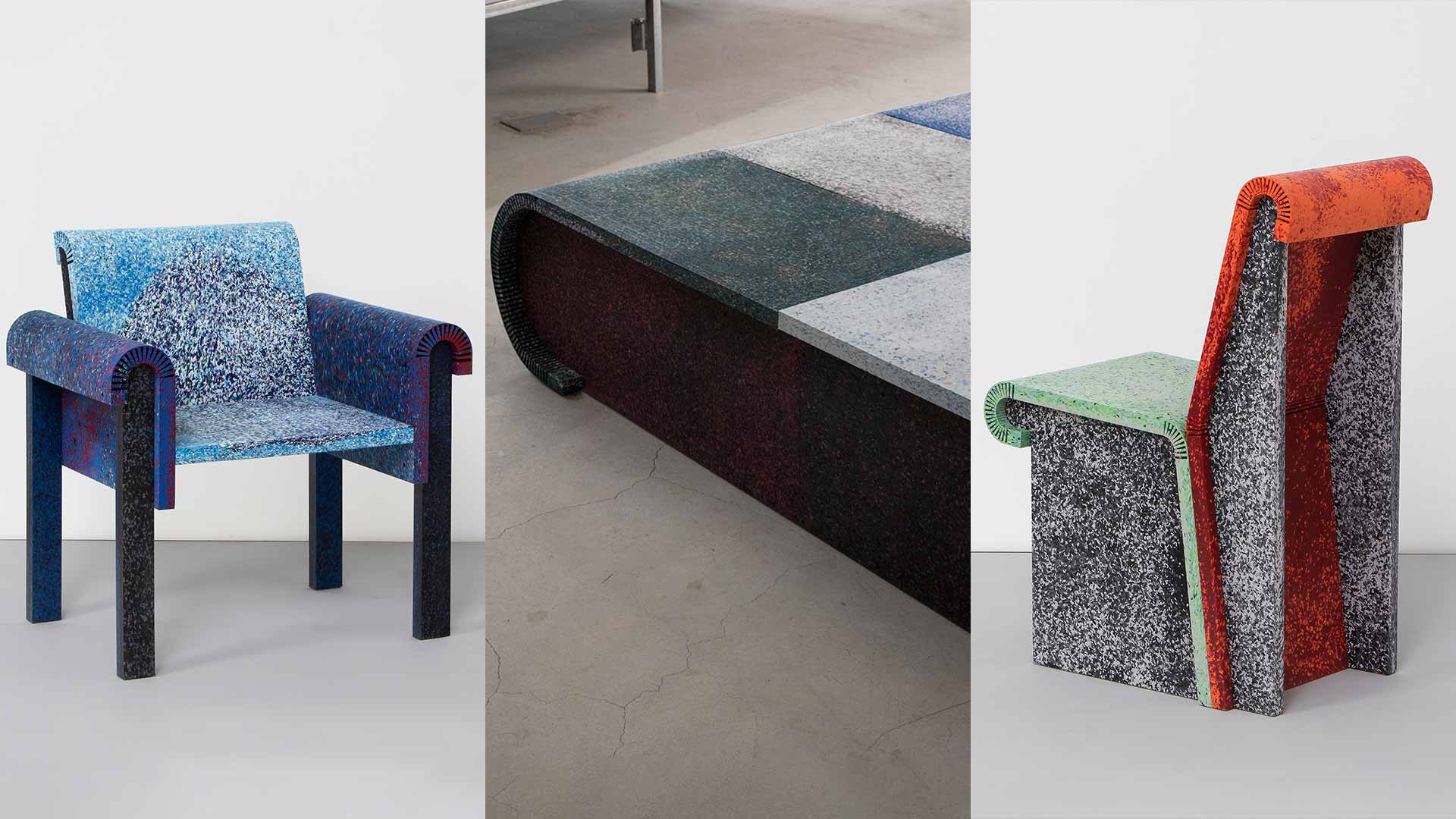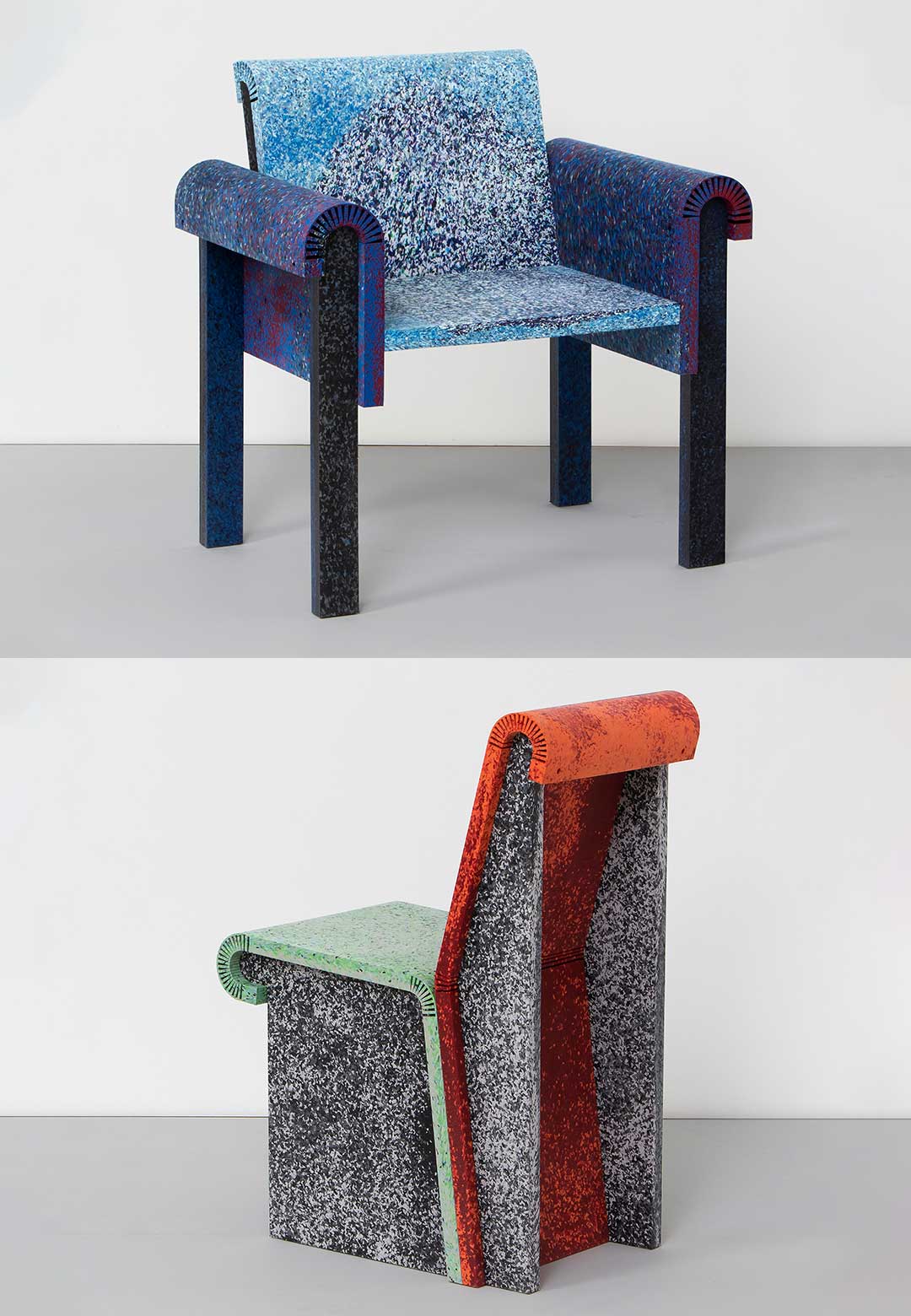Recycled plastic boards, commonly referred to as plastic lumber or composite lumber, are a sustainable and environmentally beneficial substitute for regular wood boards. These boards are made from a mixture of recycled plastics, including post-consumer plastic waste, and occasionally they also contain wood fibres or other additives. Aligning with sustainable design principles, these boards can be employed to create eco-friendly products but that comes with the drawback of rigidity. In order to render flexibility to these plastic boards, Seoul-based design studio KUO DUO led by Hwachan Lee and Yoomin Maeng applied the kerf bending woodworking technique for their Kerf Plastic series, inspired by the similarities between plastic boards and plywood. “From the previous experience, we have learned that this material is highly similar to plywood in terms of materiality. In that sense, we tried to apply a woodworking technique, ‘Kerf bending’, which is used to bend wood to the recycled plastic board,” share Lee and Maeng.
In order to bend a piece of wood efficiently while maintaining the material's structural integrity, regulated cuts, known as kerfs, are made on the surface of the material. This technique allowed the furniture designers to craft a chair, armchair and bench with flexible, contoured shapes screwed together without the need for heat, glue, or chemicals. The goal for the designers was to illustrate the unexplored potential of moulding three-dimensional objects with this adaptable material through furniture design. “This is what we aimed to show another possibility of using recycled plastic with a new attempt. Throughout some tests, we’ve found out that this plastic board is much more flexible than plywood when it gets kerfing which was easier to bend and fix the shape with only screws,” shares the duo. The kerf bending technique made the once-rigid 30T plastic boards flexible and aided them in swiftly taking on their new forms. The curved plastic was then used for the backrests, armrests and seats of the armchair and chair design.
The Kerf Plastic series is part of the studio’s ‘Word Play’ experimentation. Symbolising their way of making a series of works by combining the words of diverse construction methods with different materials. “For instance, what if ‘MIX’ and ‘WOOD’ combines? How will it be when we ‘WEAVE’ the ‘METAL’? What can we get by ‘BEND’ the ‘PLASTIC’? It sometimes sounds ridiculous and nonsense but it arouses fresh imagination to take a new approach. The process is accompanied by hands-on experiments and investigations into various materials and making methods, eventually aiming to expand our own expression,” elaborate Lee and Maeng about their exploration.
Kerf Plastic series emphasises sustainability and eco-consciousness. The upcycled design serves as an example of the significance of developing innovative ways to minimise plastic waste and advance ethical design principles. This duo of industrial designers have embraced this approach to contribute to a more sustainable future with innovative and distinctive product designs. When asked what the studio’s aim was, the product designers’ responded by stating “This new possibility of processing the material is what we aimed to showcase throughout this work,” which has been artistically presented through the collection.
Text by Ria Jha






 Sign in with email
Sign in with email








What do you think?